Summary of climate disasters on the planet: March 26–April 1, 2025
A giant fissure split the ground. Chaos, buildings collapsing, people in panic trying to escape… Another powerful earthquake has shaken the planet… And this is not a coincidence, but another link in the chain of natural disasters that are rapidly gaining strength.
Read about this and other natural disasters that occurred during the week of March 26 to April 1 in the Summary of climate disasters below.
Seismic Activity
On March 28 at 12:50 LT, a devastating 7.7 magnitude earthquake struck central Myanmar, and was felt across many Southeast Asian countries: Thailand, China, India, Vietnam, and Bangladesh.
The epicenter was located 18 km (11.2 mi) from Mandalay—a city with a population of over one million people.

A building tilted as a result of the powerful M7.7 earthquake, Mandalay, Myanmar
The earthquake’s hypocenter was at a depth of 10 km (6.2 mi), which made the shockwave extremely powerful.
According to the UN humanitarian agency, over 10,000 buildings collapsed or were severely damaged in central and northwestern Myanmar. Roads and bridges were destroyed, temples, mosques, and centuries-old historic landmarks collapsed. Mandalay International Airport went out of service due to the collapse of the control tower.
There was a total blackout and telephone disconnection. Railway tracks were twisted as if they were made of plasticine rather than steel.

Severe earthquake deformed railway tracks, Myanmar
Landslides cut off some regions from the outside world. According to the deputy program director of the International Rescue Committee in Myanmar, this made it difficult or impossible for rescuers and humanitarian aid to reach the affected areas in time.
Due to the lack of specialized equipment, rescuers and relatives of people trapped under the rubble had to dig through debris with their bare hands—in conditions of water and food shortages and daytime temperatures exceeding 40 °C (104 °F).
As of the official data from April 2, 3,003 people were confirmed dead and over 4,600 injured. But the true scale of destruction and the real number of victims can only be guessed.
Words cannot fully convey the severity of the situation in the region. Many hospitals were destroyed, and medical personnel were treating the injured directly on the streets. Bodies of those trapped under the rubble began to decompose in the heat.

Rescuers manually clear rubble in search of survivors after the powerful earthquake, Mandalay, Myanmar
The earthquake worsened an already catastrophic humanitarian situation in the country.
According to the UN, out of Myanmar’s 54 million population, around 20 million already needed humanitarian assistance before the quake, and over 15 million were starving.
This seismic event became not only one of the most powerful in the country’s history over the past 100 years, but also drew the attention of experts due to its anomalous characteristics.
The earthquake caused a rupture up to 400 km (248.5 mi) long along the Sagaing Fault, which runs from north to south through central Myanmar (as identified via remote sensing).
Moreover, the rupture speed was comparable to that of a supersonic jet aircraft.
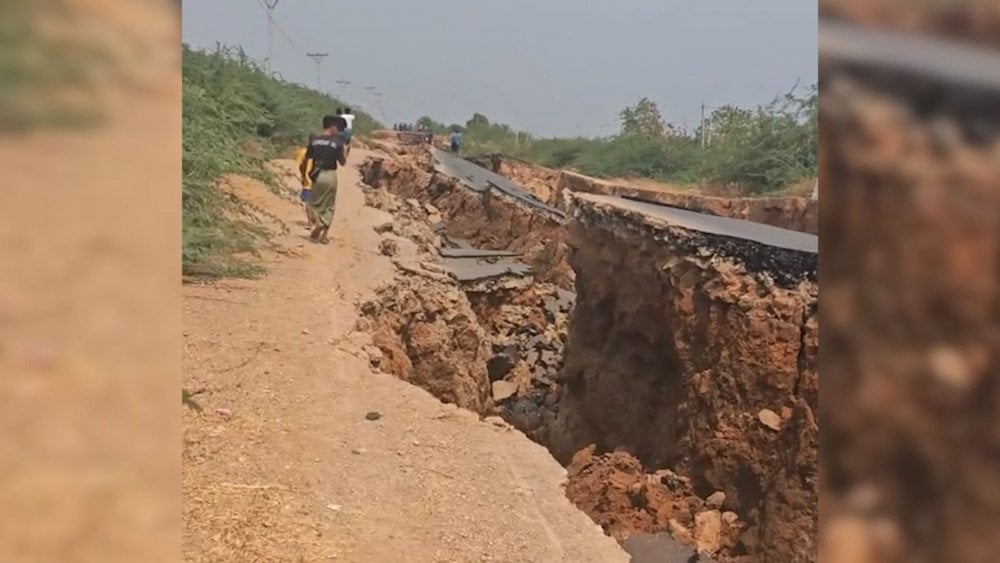
Giant fissure in the ground — aftermath of the M7.7 earthquake in Myanmar
A seismologist from the Helmholtz Centre for Geosciences described the event as a supershear earthquake—a very rare type of quake in which rupture energy travels across the fault at extremely high speeds, intensifying the destruction.
The supershear effect can concentrate seismic energy ahead of the rupture, amplifying damage even at significant distances from the epicenter.
This is supported by the destruction observed in Bangkok, capital of Thailand, located roughly 1,000 km (621 mi) from the epicenter.
As of April 2, the earthquake caused the collapse of a 30-story skyscraper under construction, killing at least 22 people, and over 70 remained trapped under the rubble.

A powerful earthquake collapsed a skyscraper under construction — people rush to leave the danger zone, Bangkok, Thailand
High-rise buildings swayed so violently that water from rooftop pools spilled over in huge waves, even knocking some people off their feet. City authorities received 2,000 reports of cracks appearing in buildings.
Just two days later, on March 31 at 1:18 LT, another powerful seismic event occurred—a 7.0 magnitude earthquake in the southern Pacific Ocean, 79 km (49 mi) southeast of Pangai, Tonga.
It caused minor damage in Tonga and a brief evacuation due to a tsunami threat. According to local residents, who are well familiar with earthquakes in this seismically active region, the shaking from the quake lasted unusually long.
Several hours later, at 4:05 LT, a second earthquake occurred in the same area, 85 km (52.8 mi) southeast of Pangai, with a magnitude of 6.2.
It’s worth noting that a sharp rise in seismic activity was recorded on the planet at the end of March this year. From March 21 to April 2, in just 12 days, 11 earthquakes of magnitude greater than 6 were recorded, according to data from VolcanoDiscovery.
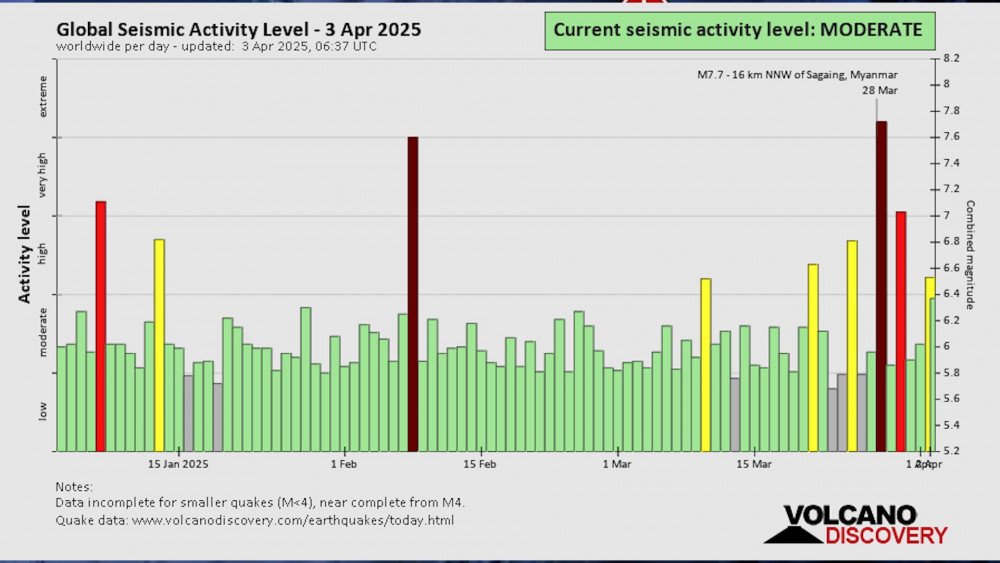
Daily global seismic activity levels according to VolcanoDiscovery
Uganda
On March 26, intense downpours in Kampala, the capital of Uganda, led to severe flooding. In several districts of the city, homes were inundated, and some were completely destroyed. Multiple roads leading to central Kampala became impassable, and many vehicles were partially or fully submerged. Powerful water currents swept away pedestrians and triggered traffic accidents.
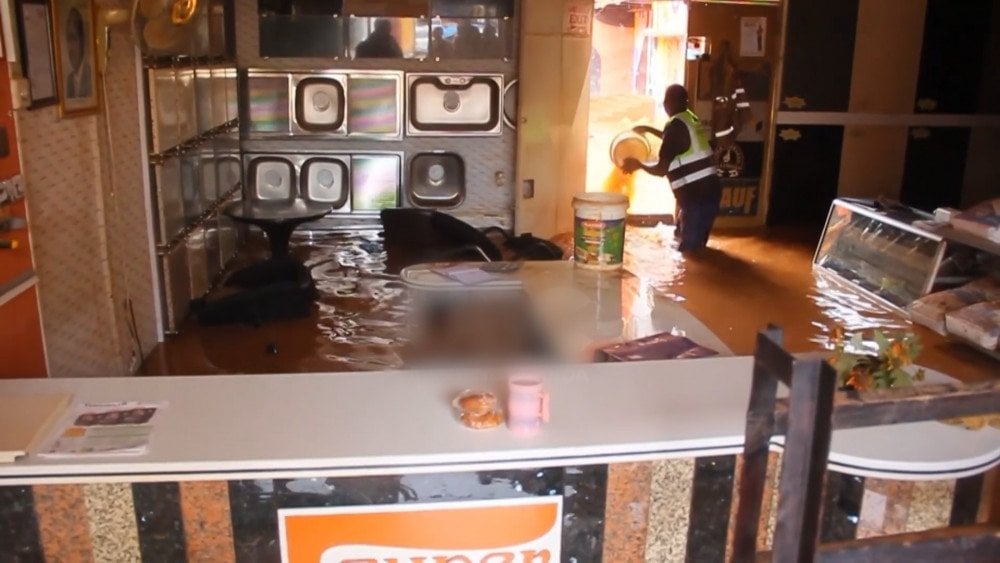
A man tries to scoop water out of a flooded room with a bucket after heavy rains, Kampala, Uganda
As a result of the flooding, at least seven people died, including two small children who drowned in their own home, submerged by floodwaters.
Argentina
On March 27, a powerful storm struck the Argentine provinces of Córdoba and Santa Fe. Wind gusts reached 115 km/h (71.5 mph), uprooting trees and damaging power lines.
In the city of Casilda, Santa Fe Province, the storm flooded streets and homes in just 40 minutes. Schools and educational centers had to be closed due to damage and power outages. Three people were injured by hail and falling branches.

Heavy hail covers the streets of Funes, Argentina
The severe weather paralyzed Route 11—a key highway connecting the central and northern parts of the country. Heavy rain and strong winds caused traffic accidents and multi-kilometer traffic jams.
On March 28, the city of Funes was hit by especially intense hail. In some places, hail piled up to 20 cm (7.9 in) deep. The weight caused several roofs to collapse. Winds tore off the roofs of a fire station, the town hall, a bank, and a sports club.
In Córdoba Province, the Unión Department was hit particularly hard. In the city of Bell Ville, wind gusts reached 146 km/h (90.7 mph). In rural areas, farm buildings were destroyed, and corn and soybean crops were wiped out.
In the city of Ucacha, the storm lasted only 20 minutes, but still caused significant damage: wind overturned a truck, hail damaged roofs, shattered car windows, and ruined crops in surrounding fields.
Australia
On March 27, torrential rains that had continued for several days caused historic flooding in Queensland. In the western regions of the state, it became the most severe flood in the past 50 years.
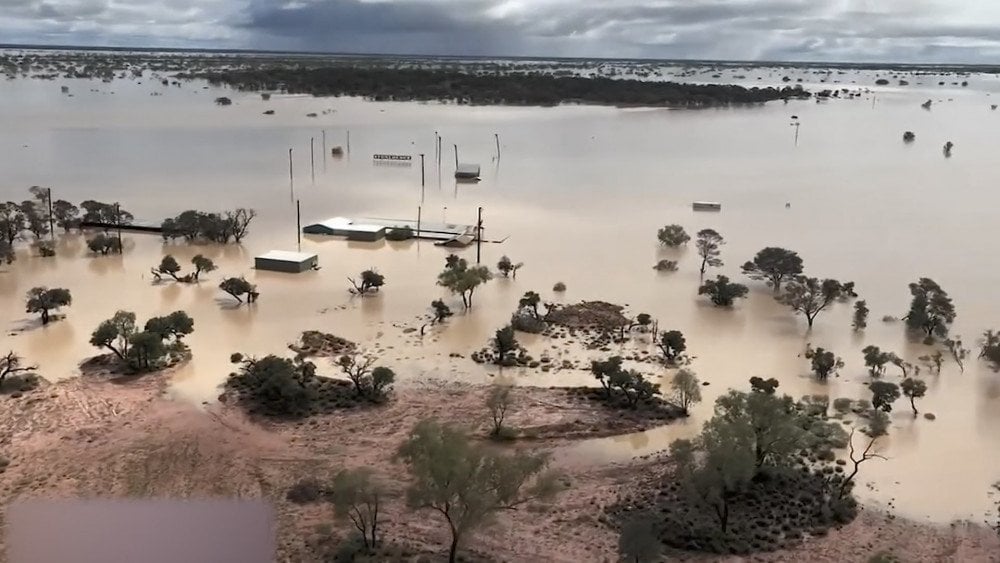
Widespread flooding in the Australian state of Queensland
In the town of Eromanga, nearly two years’ worth of rainfall fell in just a few days—600 mm (23.6 in).
The Premier of Queensland described the situation as “unprecedented.”
According to the state’s Minister for Agriculture, floodwaters submerged an area of approximately 500,000 sq km (193,000 sq mi), including arid zones that host some of the country's largest livestock farms. Preliminary estimates suggest that 105,000 head of cattle were either killed or swept away by the floodwaters.
The fire department used helicopters to drop bales of fodder to surviving animals left without food.
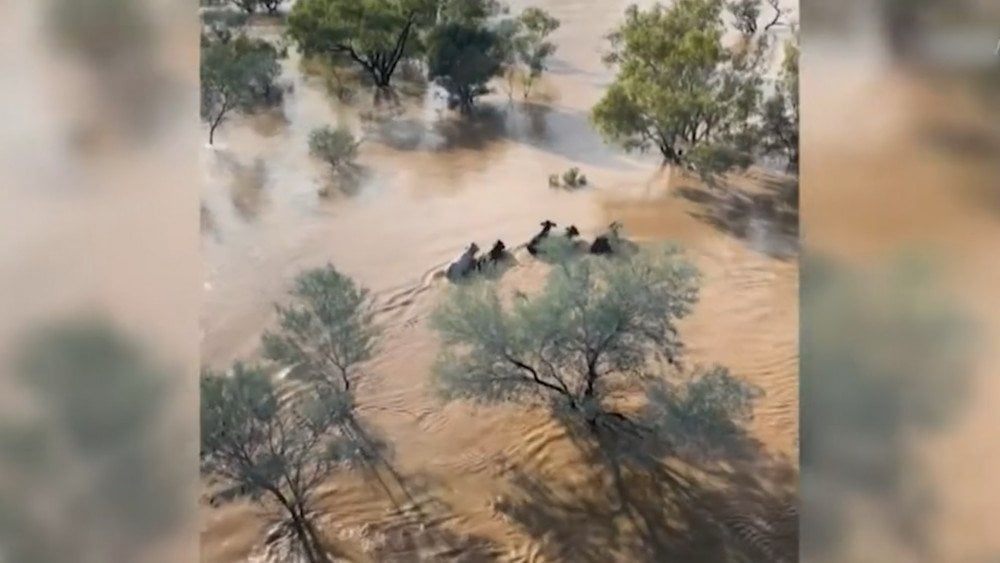
Animals making their way through flooded terrain, Queensland, Australia
About 4,000 km (2,485 mi) of roads ended up underwater.
In the neighboring state of New South Wales, which was also hit by abnormal rainfall, one person went missing, dozens were evacuated, and some communities may be cut off from the outside world for several weeks.
North America
Starting March 26, a storm with record-breaking rainfall struck the Rio Grande Valley along the U.S.–Mexico border, causing widespread flooding across the region.
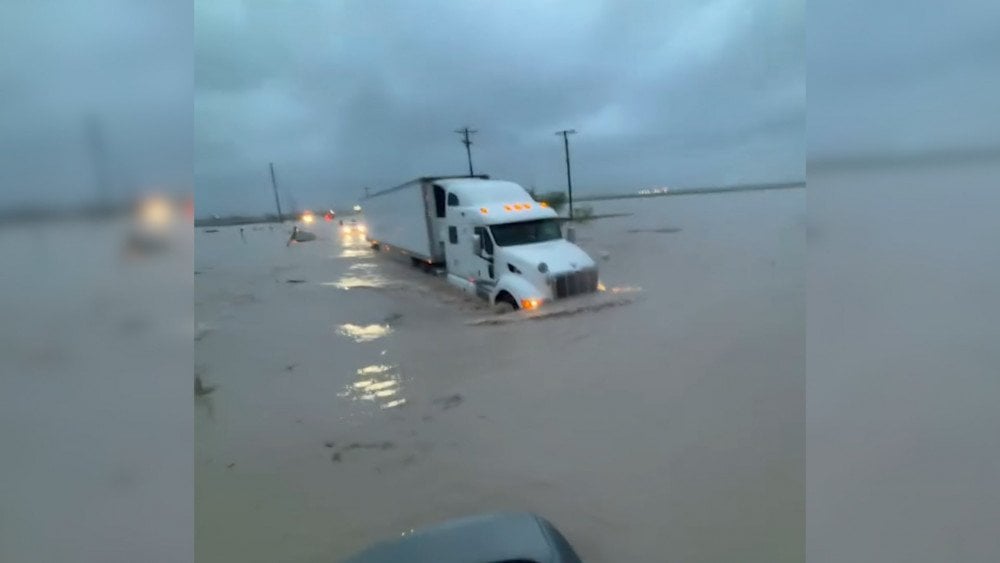
A truck cautiously drives through a flooded highway, Texas, USA
In the United States, the southern part of Texas was hit the hardest—particularly Hidalgo, Willacy, and Cameron Counties.
In Willacy County, up to 380 liters of rain per square meter fell in just six hours, trapping many residents in their homes. According to the county emergency coordinator, no flooding of this scale had occurred there since 1967.
In Harlingen, Cameron County, over 530 mm (20.9 in) of rain fell in less than two days—more than the city’s annual average of 505.4 mm (19.9 in).
In Hidalgo County, the storm brought destructive winds and tornadoes. Interstate 2 was submerged, and the roads were littered with abandoned vehicles. In McAllen, torrential rains flooded the largest hospital—where powerful water flow broke through a wall and surged through the corridors. In Hidalgo County, the storm claimed three lives.
In Mexico, the heavy rains triggered flooding in the northern states of Nuevo León, Coahuila, Tamaulipas, and Chihuahua.
The overflowing of a river in Tamaulipas led to mass evacuations and the death of one person in Reynosa. In Monterrey, floodwaters swept away vehicles and inundated homes. In Coahuila, water levels reached critical points in some areas, isolating several communities from the outside world.
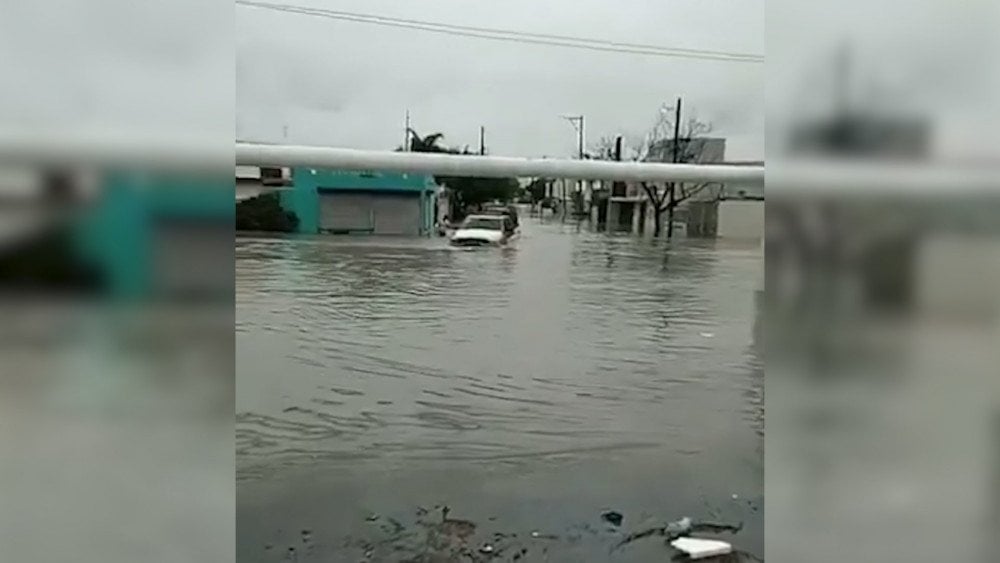
Aftermath of heavy rainfall, Mexico
Notably, in many areas, precipitation far exceeded forecasts.
Starting March 29, a powerful cold front brought an outbreak of severe weather across large parts of the United States and Canada.
Heavy snow and freezing rain struck the Canadian province of Ontario. Everything was coated in a thick layer of ice, which caused trees to collapse under the weight, blocking roads, damaging buildings, and snapping power lines.

Thick layer of ice formed on tree branches in Canada after freezing rain
More than 370,000 homes and businesses in the province lost power. States of emergency were declared in Orillia and Peterborough. Residents were urged to stay indoors and limit water use to avoid overloading the sewer system. On parts of the Trans-Canada Highway, an ice crust up to 4 cm (1.6 in) thick formed, making travel extremely dangerous.
In the United States, Michigan was severely affected. In the northern part of the state, over 1 cm (0.4 in) of ice accumulated on power lines and trees. In the city of Negaunee, nearly 50 cm (19.7 in) of snow fell by the evening of March 30.
In Kalamazoo County, a tree collapsed under the weight of ice, crushing a car—three people died, and three others were injured.
The stormy weather also impacted other states—Arkansas, Michigan, Illinois, Indiana, Wisconsin, Missouri, and Texas—bringing thunderstorms, large hail, and strong winds with gusts up to 155 km/h (96.3 mph).

Large hail fell in the state of Texas, USA
Tornadoes were reported in Missouri, Tennessee, and Michigan.
In Oklahoma and Arkansas, hail larger than 7 cm (2.8 in) in diameter was recorded.
As a result of the severe weather, more than 400,000 customers in Michigan, Wisconsin, Indiana, Kentucky, and Ohio lost electricity.
The storms claimed the lives of at least 7 people.
It’s worth noting that March of this year became the windiest on record in many U.S. cities—and across the country as a whole.
Cataclysms are intensifying, and it's becoming impossible to ignore. More and more people are starting to realize and see that something isn’t right—they are discussing it, sharing their stories. Even in the comments under news reports about natural disasters, you can see how deeply people are disturbed, how it resonates with anyone who cares, from any part of the world.
We also want to sincerely thank our viewers for your attentive, thoughtful, and deeply heartfelt comments on our videos. Thank you for your support and compassion toward those already affected by these disasters.
But here’s what’s strange: while many people take note of isolated events, they don’t connect them into a bigger picture. They see the consequences, but don’t consider the underlying causes.
And most importantly—they don’t see a way out. But there is one, and that is exactly what every one of our videos is about!
Why is that? Maybe people are waiting for the day when they turn on the news and see a ready-made solution? Or better yet—that the disasters will no longer threaten our planet?
But that’s not how it works. The issue of natural disasters, their true causes, and the solution will be taken seriously from high tribunes only if people themselves demand answers and action.
For now, only a few are spreading this information: scientists, researchers, volunteers. We’re proud to be among those who are speaking out—and we hope you’ll join us.
You can watch the video version of this article here:
Leave a comment